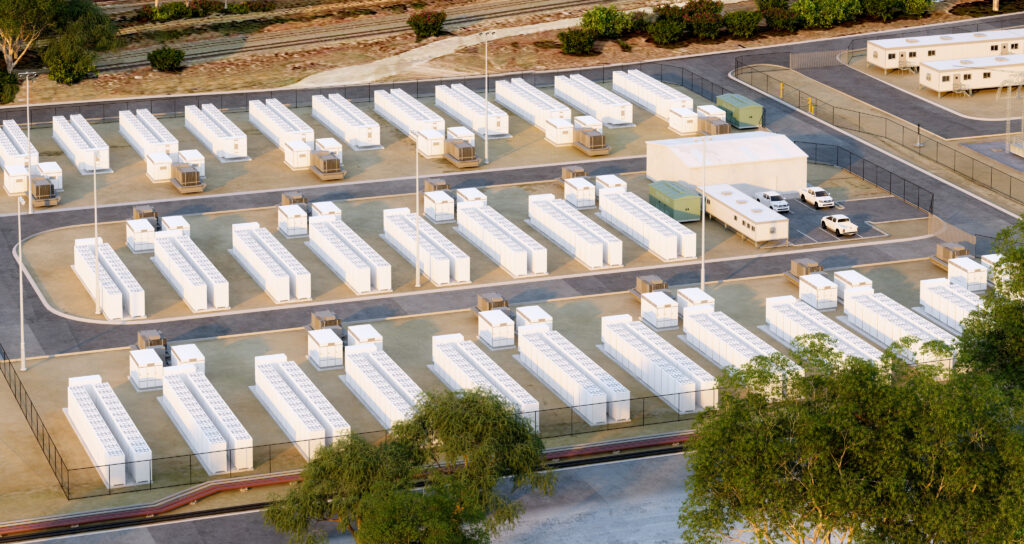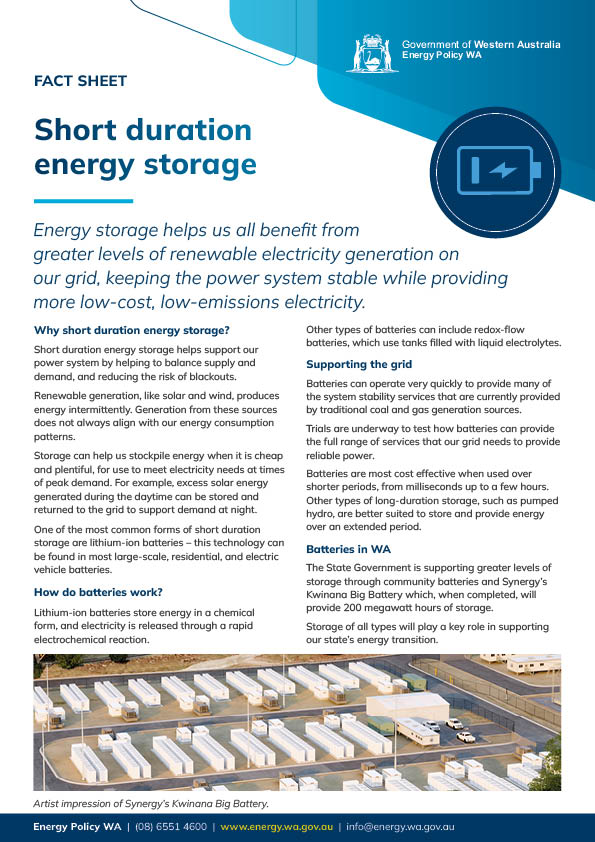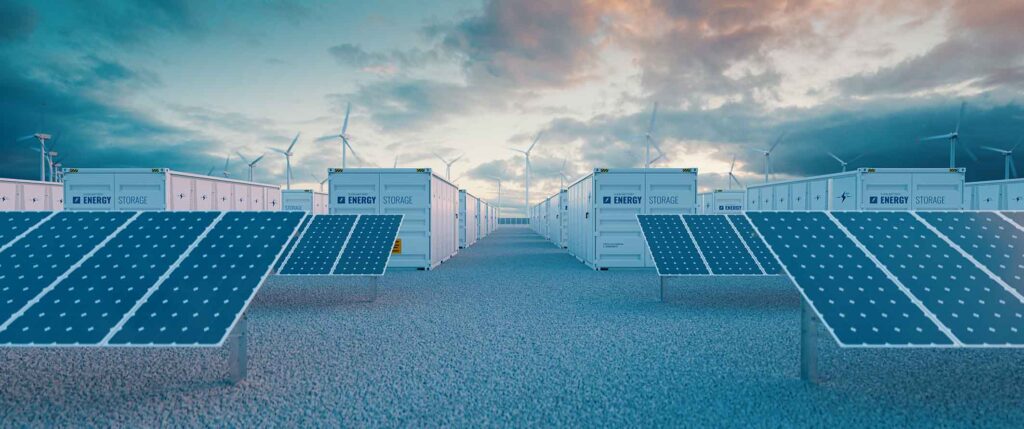Why short duration energy storage?
Short duration energy storage helps support our power system by helping to balance supply and demand, and reducing the risk of blackouts.
Renewable generation, like solar and wind, produces energy intermittently. Generation from these sources does not always align with our energy consumption patterns.
Storage can help us stockpile energy when it is cheap and plentiful, for use to meet electricity needs at times of peak demand. For example, excess solar energy generated during the daytime can be stored and returned to the grid to support demand at night.
One of the most common forms of short duration storage are lithium-ion batteries – this technology can be found in most large-scale, residential, and electric vehicle batteries.

How do batteries work?
Lithium-ion batteries store energy in a chemical form, and electricity is released through a rapid electrochemical reaction.
Other types of batteries can include redox-flow batteries, which use tanks filled with liquid electrolytes.
Supporting the grid
Batteries can operate very quickly to provide many of the system stability services that are currently provided by traditional coal and gas generation sources.
Trials are underway to test how batteries can provide the full range of services that our grid needs to provide reliable power.
Batteries are most cost effective when used over shorter periods, from milliseconds up to a few hours. Other types of long-duration storage, such as pumped hydro, are better suited to store and provide energy over an extended period.
Batteries in WA
The State Government is supporting greater levels of storage through community batteries and Synergy’s Kwinana Big Battery which, when completed, will provide 200 megawatt hours of storage.
Storage of all types will play a key role in supporting our state’s energy transition.
Download Fact Sheet
This information is available in a downloadable PDF factsheet


